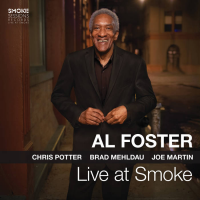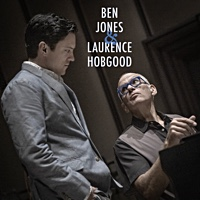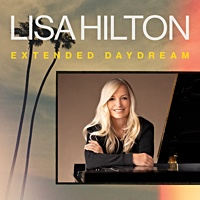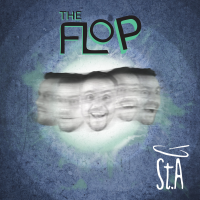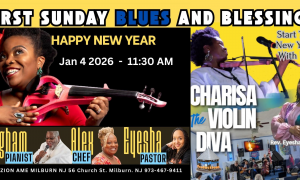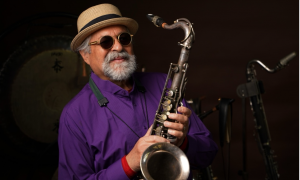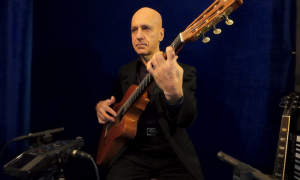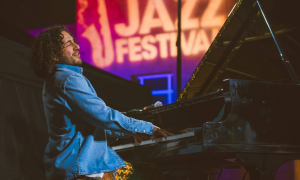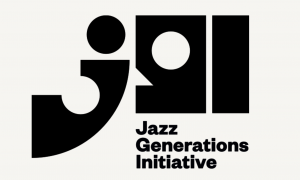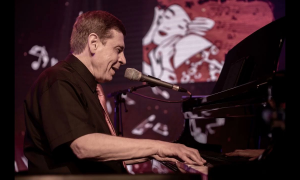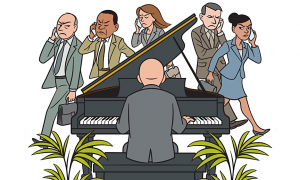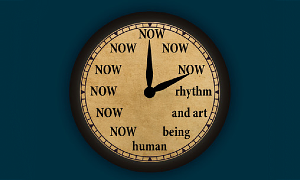Up at the gazebo, we sat near each other on the green padded bench seat that wrapped around the big round wooden table. The acoustics were remarkably hushed considering we were outside and a corps of landscapers were snipping and trimming foliage around his property. Sir George wanted the proximity to be able to hear me and see my lips.
In Part 2 of our conversation, Sir George spoke about the Beatles, his contribution to their early hits (he still holds Billboard's record for No. 1 pop hits at 23)
Marc Myers: What exactly did a producer like yourself do, for those who haven't a clue?
Sir George Martin: A producer's role is still a mystery to most music-listeners, isn't it? Put simply, my job was to make sure recordings were artistically exceptional and commercially appealing, maximizing the qualities of artists and songs.
GM: Yes, mine. And theirs. The very first time we recorded Can't Buy Me Love, I thought it was a great song but Paul wanted to start the record with the verse [sings the verse]. I said to Paul, “Why don't' we start with the tagline at the corners?" So I designed for him the “Can't buy me love" intro that starts the song.
GM: I always believed that a good song had to catch the ear. People bought records in those days based on radio disc jockeys, and you had to grab the listener's attention right away. If you could hook them, you had them. I wanted to grab the teenage girl's imagination right out of the gate.
MM: Did the Beatles understand that early on?
GM: Yes, for the most part. I think John would have objected to what I just said. He would have said, “This guy Martin is getting too popular. For God's sake, he didn't write the damn things."
GM: That's right. When I first met the Beatles in 1962, I didn't think much of their songs at all. But they learned so quickly how to write a hit. They were like plants in a hot house. They grew incredibly fast.
MM: After a take, what would you do to determine if it was the master, the one to release?
GM: Not by standing next to the monitor speaker, that's for sure. It's really in the music, isn't it? You can actually judge a performance and the way an artist delivers the lyric, the way they sing their harmonies.
GM: In the early days, we didn't do much multitracking. The Beatles were virtually doing live performances. Very soon they realized that they could probably improve their performances if they allowed themselves to overdub. And, of course, we did that.
MM: So you would be doing what exactly to get a quality take?
GM: I would be listening to get the best out of an artist. And that would happen with the Beatles quite quickly. Sometimes they would go over the top and try to do better and start getting worse. When an artist had gone too far, you knew darn well you were getting interior results. You could tell the difference.
GM: Yes. Burt wanted to go on and do more—beyond the many takes we had already done. I spoke over the studio phone to him. I said, “Burt, what exactly are you looking for?" He said, “I'm looking for that little bit of magic, George." I said, “Well Burt, I think you got that little bit of magic three takes ago. Come have a listen."
GM: Poor Cilla. She was almost wrecked at that point. She had already gone over the top. Burt eventually chose the one I had played back for him. Later, Cilla said to me, “I've never been more grateful to any man in my life that to you at that time." I'm sure Burt would have kept on going. [Pictured above: Burt Bacharach, Sir George Martin and Cilla Black at the Alfie session in Studio One at Abbey Road in the fall of 1965]
MM: Were you on the Beatles' first flight to the U.S. in February 1964?
GM: Not on the first occasion. Don't forget, I was still working for EMI in 1964 and they weren't happy to send a member of their staff abroad for seemingly no reason at all.
GM: No, I wasn't. Mind you, I didn't want to leave EMI. I liked working at Abbey Road Studios. But fear wasn't an issue by the time I left. [Pictured above: Sir George Martin and John Lennon at Air Studios]
MM: Why did you leave?
GM: I wasn't being paid enough. I was generating a fortune for EMI and was being paid a ridiculously low salary. I knew I was worth much more. I knew AIR would make it because we were good.
GM: No, they didn't. Well actually, that's not quite true. The head of EMI, Len Wood, did make me an offer but it was absurd. And it showed what a rotten mathematician he was [laughs].
MM: What was the offer?
GM: He said he was going to give me a raise, which was marginal, and an 11,000-pound bonus for the previous year. But during our discussion he accidentally revealed how much I was worth. He said that EMI had earned 2.2 million pounds on the records I had made, which made the 11,000-pound bonus a bad joke. That convinced me that it was time to leave.
GM: It was. We certainly had never done anything like it before—and no one else had either. When you listen to Yesterday, you can hear the classical value. Of course, I had heard the song quite often before we had recorded it. When we went to Paris in 1964, Paul would go to the piano [in his hotel room] and start playing it. He called it Scrambled Eggs in those days.
MM: What did McCartney think about the work in progress?
GM: He was wired. He knew it was great. He said he had dreamed the tune and asked me if there was anything else like it. You know, you can write something you think is original but it actually can be something you've heard before that's resting in your subconscious.
GM: I said I had never heard the melody. I said, “Take it. Don't worry about it. Finish it." Paul came up with the title Yesterday. I reminded him there was a song called Yesterdays. He said, “I don't know it and no one else does." When we came to recording it, Paul asked me, “How should we handle it?" I said, “You go down to the studio with your acoustic guitar and we'll record you. I'll think about it."
MM: What happened next?
GM: We did one or two takes, and Paul came out and said, “What do you think?" I said, “It does need something, but I can't see Ringo banging away on it. And frankly, I don't think we need anything really much. Maybe strings."
GM: Paul made a grimace and said, “Hmmm, I don't want Mantovani, thank you." I said, “It doesn't have to be like that—we can be more clinical. We can use a baroque string quartet." Paul didn't know what I was talking about. I said, “It's a classical form—two violins, a viola and cello."
MM: How agreeable was McCartney to the idea?
GM: He said OK. So I wrote an arrangement. It was simple, really. He liked it very much. When Eleanor Rigby came along a year later, Paul said, “I'd like to use strings for this," which was a tremendous departure from what it was originally.
GM: Drama and tension. They raise the song to a different place in the heart, don't you think? My approach was greatly influenced by Bernard Herrmann and his film score for Psycho. He had a way of making violins sound fierce. That inspired me to have the strings play short notes forcefully, giving the song a nice punch. If you listen to the two, you'll hear the connection.
GM: I don't know [laughs]. The Beatles and I were of a like mind. We always wanted to try something new. The Beatles in particular were constantly coming to me saying, “What can you give us? What instruments do you know about that we could use? What recording ideas can you give us?" Their inquisitiveness pushed us into new territory. They lapped up new ideas. They were very curious people and wanted to look beyond what everyone else could do.
MM: John too?
GM: Especially John.
MM: How did you invent that?
GM: Expediency, old chap [laughs]. I found that on In My Life, I couldn't play the piano at the speed it needed to be played, the way I'd written the part. I wasn't that good a pianist, but if you had had a really good pianist, he could do it. I couldn't get all the notes in. One night I was by myself and played the notes at half speed but an octave lower on the piano, recording at 15 inches per second. When I ran the tape back at 30 inches per second, the notes were at the right speed and in the correct octave.
GM: Not exactly. As you're doubling up the speed, you're also shortening the decay of each note. The piano's sound has a resonance. By doubling the speed, you are cutting that resonance in half. That's why it sounds like a harpsichord.
JazzWax clips: Once Sir George had success with the Beatles in the 1963, Beatles manager Brian Epstein began bringing in a parade of Liverpudlian talent for him to produce. The list included Gerry and the Pacemakers, Billy J. Kramer and the Dakotas, and Cilla Black.
The best set of Cilla Black material is Completely Cilla:
JazzWax DVD: Produced by George Martin (Eagle Rock), a DVD and Blu-Ray of a BBC documentary with additional material, is being released today in the U.S. You'll find it here.
JazzWax clips: Here's Bernard Herrmann's Psycho theme—Sir George's influence for his string writing on the Beatles' Eleanor Rigby...
Here's the Beatles' Eleanor Rigby...
Here's In My Life from Rubber Soul. Listen for Sir George's “wind-up" piano solo, which sounds like a harpsichord...
Wait, there's more!
This story appears courtesy of JazzWax by Marc Myers.
Copyright © 2025. All rights reserved.



